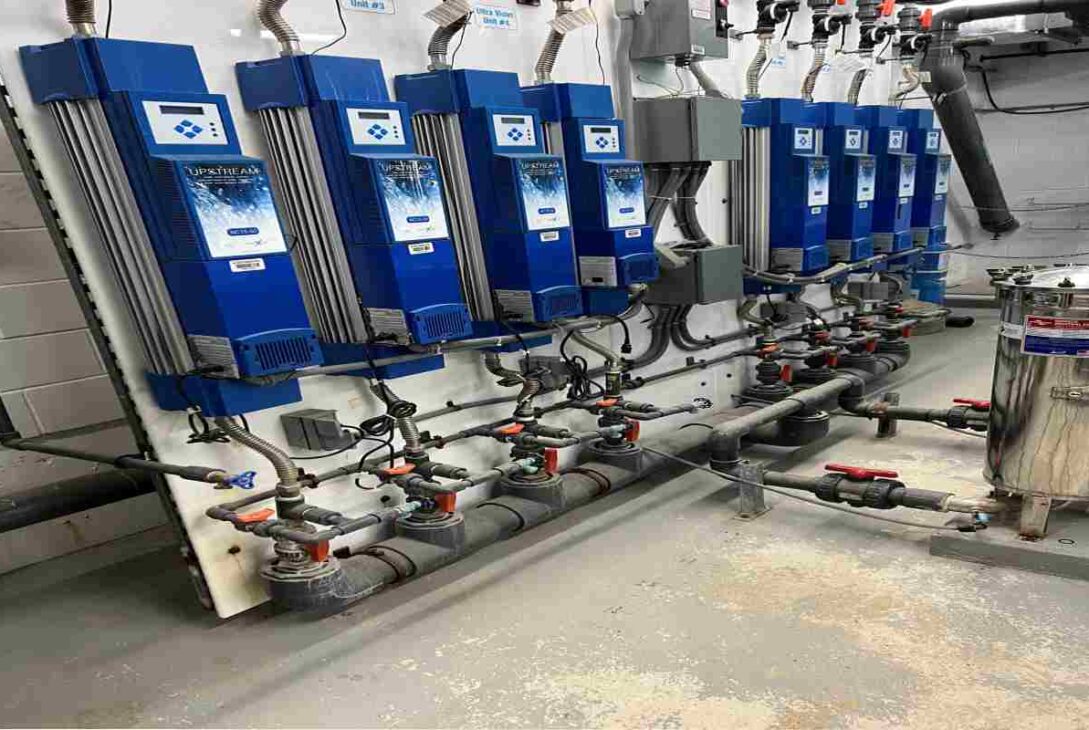If you’ve got a private well on your property, you’ve likely wondered about the rules that govern its usage. Unlike city dwellers who simply turn on the tap without a second thought, homeowners in the countryside shoulder the weight of ensuring their water is safe to drink. It’s a responsibility that’s often misunderstood and overlooked.
While a Canadian water company manages public systems in towns and cities, rural folks are left to fend for themselves when it comes to the quality of the water. This gap in oversight means thousands of families across the countryside might be using water that doesn’t meet basic safety standards—something that could affect everything from your morning coffee to your property’s resale value.
Water Rules Vary Across Provinces
The confusing reality for Canadian homeowners is that water regulations will change depending on which province you call home:
- Ontario enforces Regulation 903, which means you’re legally responsible for maintaining your well and properly sealing any unused ones
- BC follows their Water Sustainability Act requiring you to register your well and meet specific construction requirements
- Alberta puts the onus squarely on property owners through their Water Act to test and maintain private systems
- Manitoba won’t allow just anyone to drill a well—it must be done by licenced contractors, and testing is required every five years
Fail to follow these rules, and you might face more than just a slap on the wrist. Beyond hefty fines, you could be liable if contaminated water from your property affects your neighbours. But the real worry isn’t legal—it’s about keeping your family healthy.
Testing: The Task Most Homeowners Avoid
Most folks are stunned to learn that perfectly clear, great-tasting water might harbour invisible threats. Without proper testing, your tap could be delivering:
- Bacteria from nearby septic systems
- Heavy metals that accumulate in the body over time
- Agricultural chemicals from neighbouring farms
- Naturally occurring elements that pose health risks
Though Health Canada suggests testing your well water at least three times yearly, with a full analysis done annually, the truth is most rural homeowners test far less often. Some never test at all.
Ask yourself honestly—when did you last check what’s in your water? If you’re scratching your head trying to remember, you might want to make that a priority.
Staying On-Side With the Rules While Protecting Your Home
Your water system isn’t just about compliance—it represents a significant chunk of your property’s value. Falling foul of regulations threatens both your bank account and your home’s worth.
To keep things above board:
- Keep a proper file with your well’s construction details, any changes made, and all testing paperwork
- Check your well cap, casing and surrounding area every few months for visible problems
- Book a yearly once-over with a qualified water system technician
- Mark your calendar for bacterial testing each season and chemical testing yearly
- Stay in the loop about changes to local water rules
It’s worth noting that when selling your property, most provinces require you to disclose water quality information to buyers. Hidden water problems often lead to collapsed deals or even court battles after the sale.
New Tech Makes Following Rules Easier
Modern well systems now come with clever features that help keep you compliant while improving water quality:
- Digital controllers that keep an eye on water parameters day and night
- Automatic reminders for testing based on your local requirements
- Remote monitoring for cottages and seasonal properties
- Treatment systems that adjust themselves based on water conditions
These innovations aren’t just about making life easier—they provide real peace of mind, especially if your household includes children, elderly family members, or anyone with health concerns.
The Real-World Consequences of Cutting Corners
Beyond the obvious legal troubles, ignoring water regulations carries serious risks:
- Health issues: Contaminated water can cause everything from stomach bugs to long-term illnesses
- Property damage: Poorly maintained systems might cause foundation problems or flooding
- Selling headaches: Documented water problems can slash your property value
- Insurance woes: Claims related to water damage might be rejected if your system isn’t up to code
Take the case of a family near Sudbury who discovered unsafe levels of arsenic in their well after drinking the water for years. Beyond their health worries, they watched $30,000 vanish from their property value when it came time to sell.
Seasonal Challenges in Canadian Well Care
Our uniquely Canadian climate creates special challenges for well owners throughout the year:
- Spring runoff brings meltwater that can introduce bacteria and contaminants
- Summer drought may lower water tables and concentrate minerals in your water
- Autumn leaves and decay can affect surface water quality and filtration
- Winter freezing might damage well components and make testing difficult
Each season demands specific actions to keep your water safe and your system compliant. Planning ahead for these predictable changes prevents nasty surprises when you least expect them.
Your Well Compliance To-Do List
- Find out exactly which rules apply in your area
- Book a comprehensive water test if you haven’t done one in the past year
- Give your well a thorough visual inspection from cap to ground
- Gather and organize your well documentation and create a testing schedule
- Consider upgrades that improve both safety and compliance
Don’t wait until someone gets sick or an inspector comes knocking. Your family’s well being and your property’s value depend on taking charge of your water system now.
Worth the Effort
Understanding the rules governing your well isn’t just about avoiding trouble—it’s about protecting what matters most. Through regular testing, proper record-keeping, and preventative care, you ensure safe water for years to come.
Rather than seeing these regulations as red tape, consider them guideposts to help you maintain one of your home’s most crucial systems. With some attention and care, keeping your well water safe and compliant becomes just another part of country living—a small price for the pleasure of rural Canadian life.



